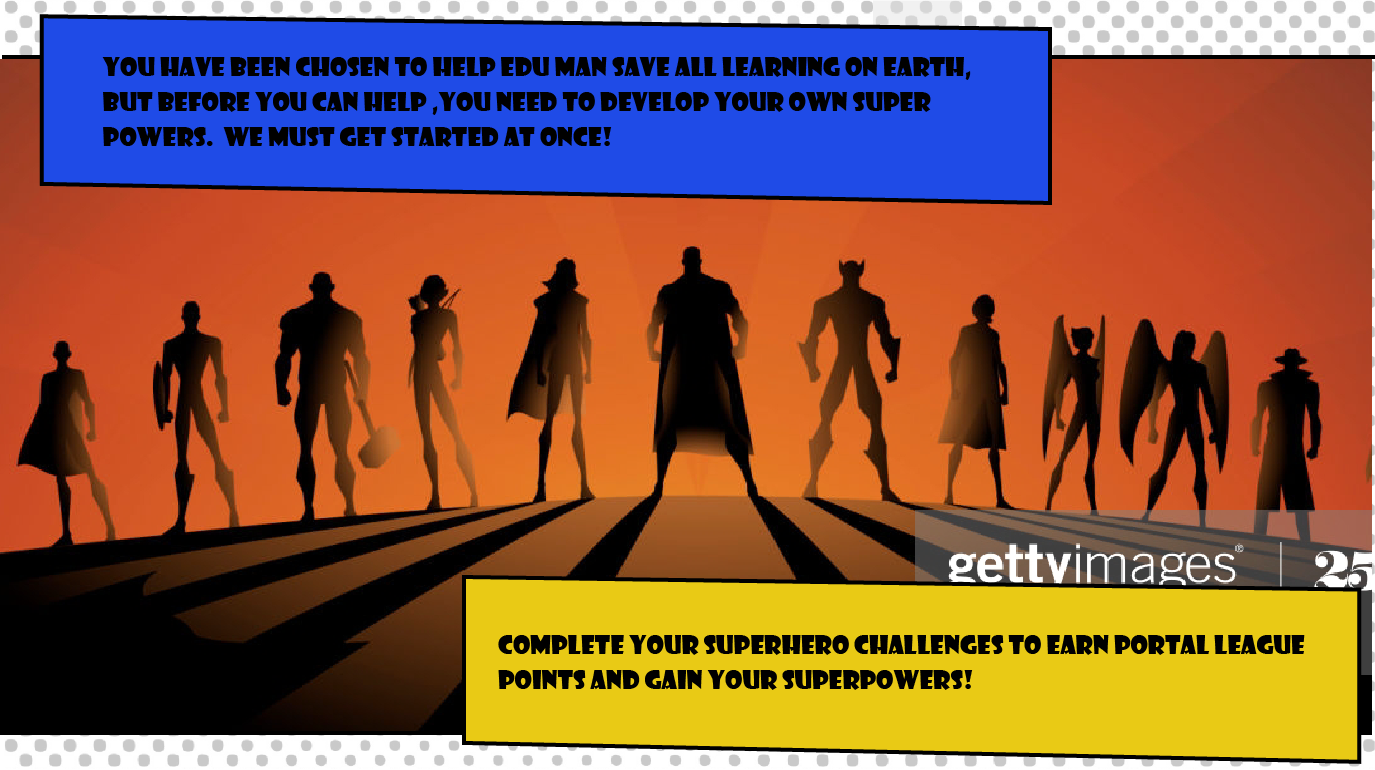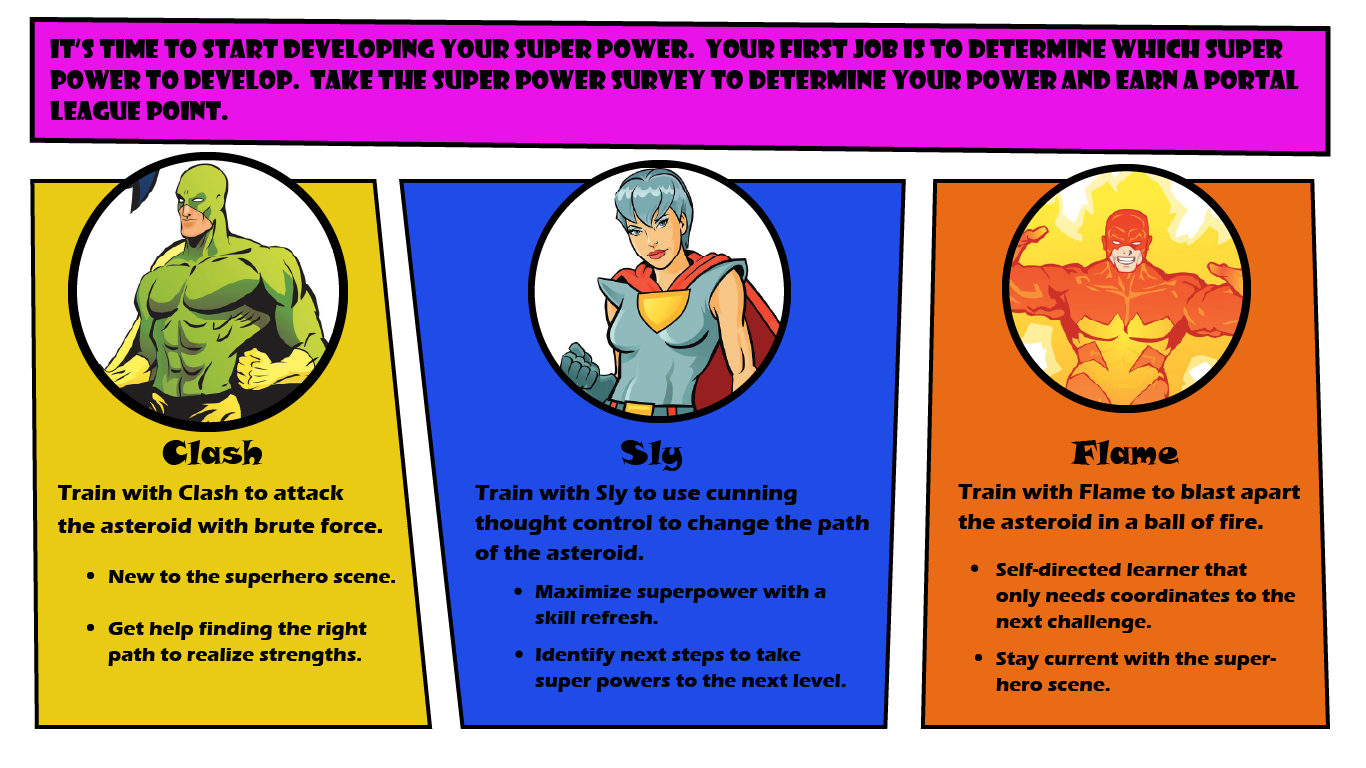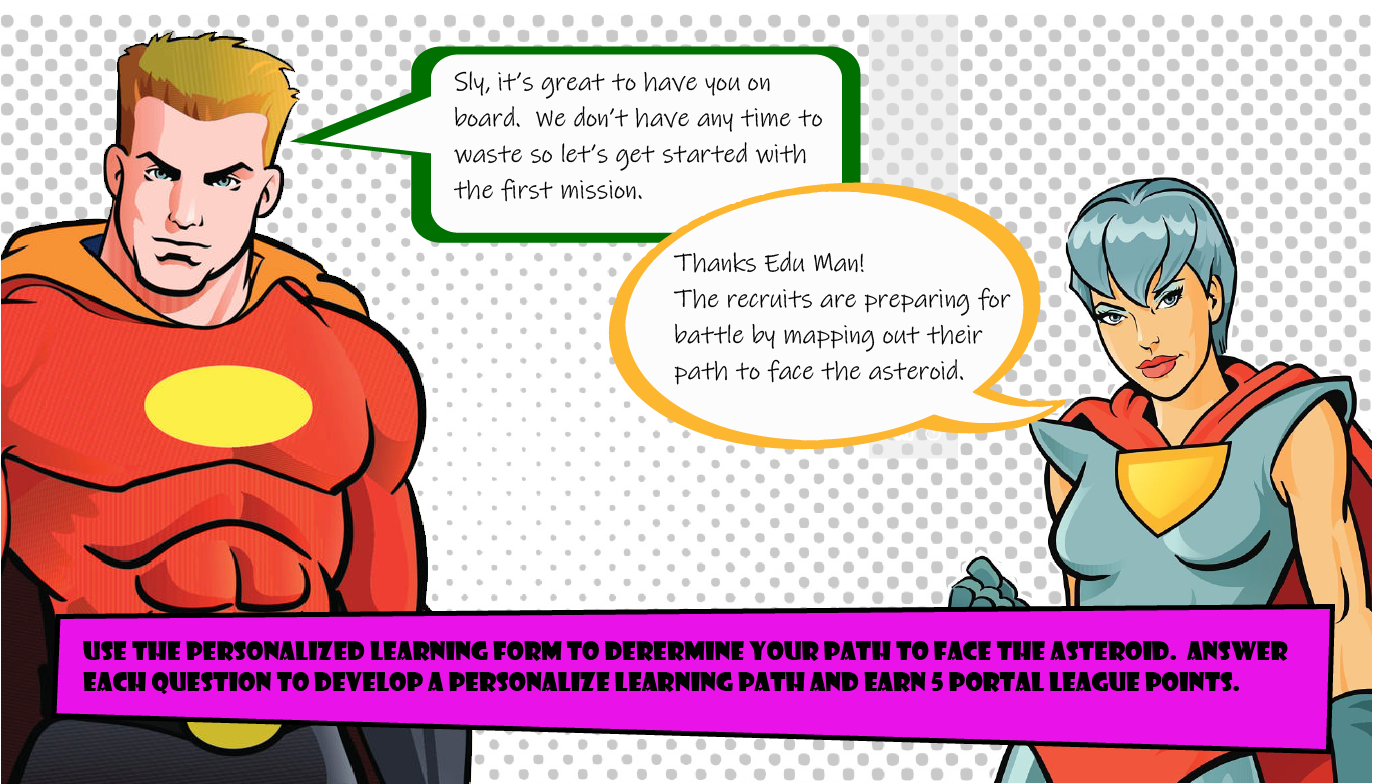Title
Gamified corporate learning portal: fostering software sales with education
Context
A new corporate learning portal was implemented, to support partner, customer and team development for our data visualization software products. It serves as a central resource, pulling together asynchronous video-based training, instructor led, webinars, assessments, certifications, and academic program learning. In addition, features were added offering guided learning paths, and personalized learning, as well as directions for management of portal presence and usage.
The portal was a solution for organizing large amounts of content, bringing together multiple different programs, and personalizing the learning experience. Although it succeeded in addressing all of this new challenges surfaced. Users were not exploring the portal or watching instructional videos, instead they would frustrate easily and submit help desk tickets. Features designed to improve the learning experience were not being used, and overall, the portal started receiving less activity than expected. The solution, gamifying the portal.
Tasks users should be able to do
Earning points and progressing in the game requires completing challenges. Each challenge will require completing one or several portal or learning tasks.
- Portal related tasks:
- Explore the portal on their own.
- Commit to a learning path (guided or personalized).
- Visit the portal on a regular basis (weekly or monthly).
- Participate in special events (webinars, etc.).
- Watch directional videos to learn about portal features.
- Independently manage accounts.
- Learning tasks:
- Take skills assessments.
- Complete training videos.
- Complete learning paths.
- Register for certification exams.
- Participate in Instructor-led public courses.
- Desire a higher expertise beyond current roles.
Gamification needs to motivate consistent visits to consume training content and promote exploration on the site so users will become familiar and require less hand holding. Simply adding standard gamification features is not enough to accomplish this, instead a fully integrated experience must be created (Coccoli et al., 2015).
Mechanics
| Game elements | Strategy | Rationale |
| Main storyline | Sets the theme of components, all narrative, activities, and sub-stories tie back into the main story. Brings all components together and adds a level of motivation to find out what happens next in the story. | A more modern approach will incorporate the use of storytelling, with an engaging narrative, to enhance participation (Coccoli, 2015). Can aid in providing context (Herzig, et al., 2015). |
| Challenges | Drives user activities to achieve learning goals and promotes in engagement and retention. The spirit of competition will motivate users to visit regularly. | Challenges or missions can be individual or collective (Herzig, et al., 2015). Aids in engaging learners (Coccoli, 2015), and has shown to motivate (An, 2020). |
| Point system | Earned by completion of designated activities, course completion, and portal task completion. Will accumulate on leaderboard and be visible to all users. Some badging associated with point accumulation. | A type of measurement that may include advancement, redemption, reputation, and skills (Herzig, et al., 2015). |
| Badges | Achievement award for reaching certain milestones. Badge categories for learning tasks, portal tasks, and designated achievements. Some badging is generic, and some are related to departmental goals. Design aligns with company branding guidelines, except for a small collection of storyline related badges. | Expected and unexpected achievements (Herzig, et al., 2015). Badges carry meaning within an organization; however the current social eco-system allows individuals to brag about accomplishments giving organizations expanded marketing networks (Prakash & Rao, 2015). |
| Leaderboard | Scoreboard displaying accumulated points. Visible to community after login. Future phases will offer organizations (customers, partners, departments) to have a leaderboard specific to that audience. | Compilation of scores, achievements, and completed lessons (Coccoli, 2015). Learner achievement can be compared with others and ranked, creating some level of competition which motivates regular participation (Coccoli, 2015). |
| Personas | Storyline-based characters that users can identify based on multicultural, gender, race, etc. Chosen at the opt-in stage, the persona will have specific traits and be integrated into feedback. | Viewpoints from themed characters promote a more personalized learning experience (Coccoli, 2015). |
| Walk-me | Pop-up triggered by specific accomplishments to provide Instant feedback and guide users through learning stages. | Feedback or notification offering praise, corrections, or information (Herzig, et al., 2015). |
| Progress map | Big picture view of progress, accomplishments, and next steps. | Research does not go into using a progress map. Herzig, et al. (2015) uses the leaderboard to show individual progress. Typically games show some type of progress towards the win or milestone (An, 2020). |
Goal of gamification
Main goal: Increase adoption of the learning portal, training products and ultimately selling more software licenses.
Supporting goals:
- Motivate learners to reach their goals and participate in ongoing learning.
- Promote learning portal features that might not be discovered.
Gamification design
In an effort to create an adaptable experience there were two learning paths that users may choose to opt into. The learning adventure is fully featured with a storyline and themed components, challenges, points, leaderboard, guided progress map and walk-me pop ups for feedback. The learn and earn is a scaled down version. with access to a themed self-paced progress map, leaderboard, points, and badges.
Main Storyline

The introduction screens establish the storyline for the main theme and first challenge story.
The challenge to save all learning servers on earth is introduced. Learners are asked to earn their own superpowers to help in the effort.



User Personas are introduced, each varying in superpowers and characteristics. The completed list of personas will include a more diverse array of characters, to make it easier for learners to find a relatable persona.
Finally the first challenge begins. Challenge introductions, and major milestones will include a more collaborative dialog between personas.
The point of the first challenge is to become familiar with components of the gamification, and a basic walk through of the learning portal.


After completion of tasks a dot will light up on the progress map. As milestones are achieved earned badges will begin to light up.

Prompts will pop-up after completion of each task. These prompts will congratulate, motivate and guide learners to next steps.
Future challenges will incorporate a stepped process for completion of a learning path, exploration of new portal features, and unplanned tasks that will address any influx of help desk tickets.
Technology
Overall success of a gamification implementation can depend on the capabilities of the platform (Coccoli, 2015). Prakash & Rao (2015) recommend implementing a new system that can support gamification, however the cost makes this prohibitive to many organizations, and the system currently being adapted was just put into place. Gamification was not the purpose but added later.
After the desired mechanics were determined, and theme decided the portal platform capabilities were reviewed. The portal is developed on a Moodle platform, the initial strategy was to find existing functionality and plug-ins that can be easily (and inexpensively) implemented. Related components were implemented in the first phase. This phase also serves as an opportunity to prepare the environment for future phases. Programming was required to customize the portal for storyline integration and adding the story theme to components as well as integrating the progress map, aligning opt-in with personas. Third-party vendors were chosen for badging/micro-credentialing.
Implementation
Implementation team: Portal admin, systems admin, third party vendors, design team, project managers, departmental managers. (Instructors are users and have no role in implementation).
This project is too massive to detail every step, however the list below gives an idea of tasks that are being addressed.
Phase I
Basic structure
- Install and configure plug-ins to LMS for leaderboard
- Install and configure plug-ins to LMS for opt-in terms
- Install and configure plug-ins to LMS for progress map
- Design leaderboard
- Design opt-in graphics
- Work with legal for opt-in terms
- Design progress map
- Configure leaderboard
- Configure opt-in
- Configure progress map
Reward system
- Identify tasks/challenges required to earn points
- Identify point accumulation milestones
Badging
- install badging plug-ins to LMS & do any coding needed
- Secure third party for micro-credentialling
- Identify badge categories and associated levels
- Design badges
- Determine terms for earning badges
- Configure LMS settings
Phase II
Walk-me prompts
- LMS programming to integrate walk-me prompts
- Identify guidelines for when the prompt will show
- Design prompts to align with game theme
- Configure prompts to align with designated appearances
Main story
- Design introduction, including directions for participation
- Design user personas
- Integrate user personas into the system
- Design first story
- Determine at which milestone the story appears
- Design ending or wrap-up of first story and lead into next story
- Configure LMS to integrate story into the structure
References
An, Y. (2020). Designing effective gamified learning experiences. International Journal of Technology in Education (IJTE), 3(2), 62-69.
Coccoli, M., Iacano, S. & Vercelli, G. (2015) Applying gamification techniques to enhance the effectiveness of video-lessons. Journal of e-Learning and Knowledge Society, 11(3), 73-84.
Herzig, P., Ameling, M., Wolf, B. & Schill, B. (2015) Implementing gamification: Requirements, and gamification platforms. Gamifi cation in Education and Business, 431-450.
Morschheuser, B., Werder, K., Hamari, J. & Abe, J. (2017) How to gamify? A method for designing gamification. Proceedings of the 50th Hawaii International Conference on System Sciences, 1298-1307.
Prakash, E.C. & Rao, M. (2015) Transforming learning and IT management through gamification. International Series on Computer Entertainment and Media Technology. DOI 10.1007/978-3-319-18699-3_8
